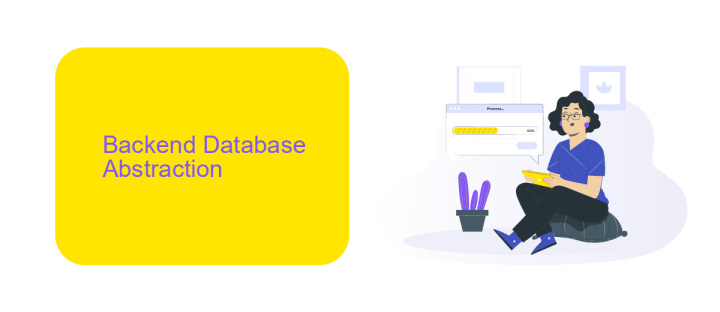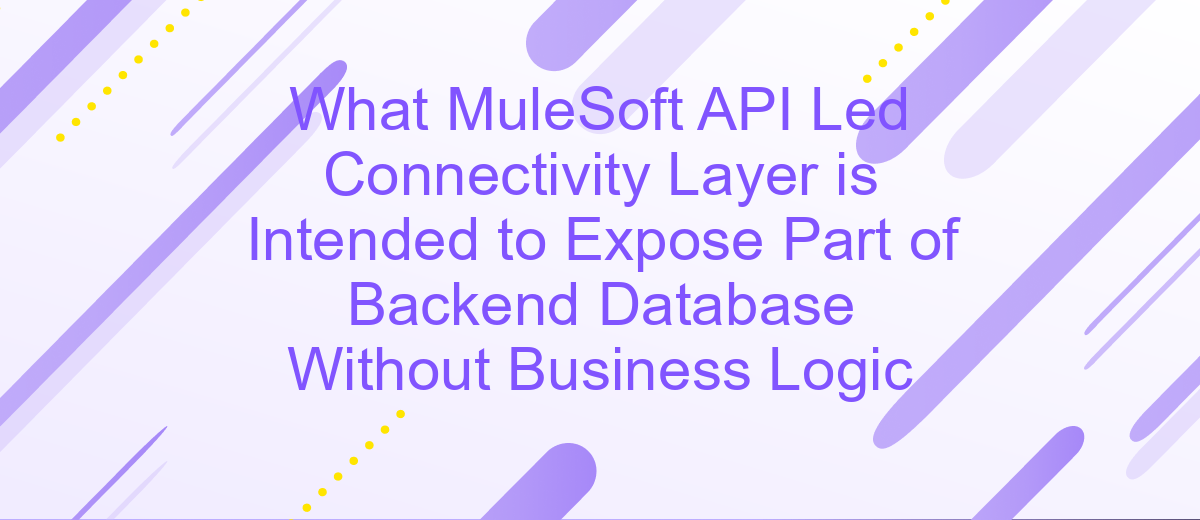What MuleSoft API Led Connectivity Layer is Intended to Expose Part of Backend Database Without Business Logic
MuleSoft API Led Connectivity Layer is designed to streamline the integration process by exposing essential parts of a backend database while excluding business logic. This approach enhances data accessibility and ensures that applications can interact with the database efficiently. By focusing on core data elements, MuleSoft enables seamless connectivity, fostering agility and innovation in enterprise environments.
API-Led Connectivity Layer
The API-Led Connectivity Layer is a strategic approach to connecting applications, data, and devices through reusable APIs. This layer facilitates seamless integration by exposing part of the backend database without embedding business logic, ensuring that the core functionalities remain intact and secure.
- Reusable APIs: Enable developers to create APIs that can be reused across different applications and services.
- Modular Architecture: Provides a structured approach to integration, making it easier to manage and scale.
- Security: Ensures data protection by exposing only necessary parts of the backend database.
- Flexibility: Allows for easy updates and modifications without affecting the entire system.
Using services like ApiX-Drive, businesses can streamline their integration processes. ApiX-Drive offers tools to connect various applications and automate workflows without extensive coding. This enhances the efficiency of the API-Led Connectivity Layer, making it a vital component for modern digital ecosystems.
Backend Database Abstraction

The backend database abstraction layer in MuleSoft API Led Connectivity serves as a crucial intermediary that separates the database from the business logic. This abstraction ensures that the underlying database structure and its complexities are hidden from the end-users and developers interacting with the API. By doing so, it allows for a more flexible and scalable architecture, where changes to the database can be made without impacting the business logic or the API consumers. This separation also enhances security by exposing only the necessary data through the API, keeping the rest of the database concealed.
ApiX-Drive, a service designed for seamless integration, can be leveraged to configure these abstractions effectively. It simplifies the process of connecting various systems and automating data flows, ensuring that the backend database interactions are smooth and efficient. By utilizing ApiX-Drive, organizations can streamline their integration processes, reduce manual intervention, and maintain a consistent and reliable connection between the API and the backend database. This not only boosts productivity but also ensures that the data integrity and security are maintained throughout the data lifecycle.
Business Logic Exclusion

In the context of MuleSoft API-led connectivity, excluding business logic when exposing parts of the backend database is crucial for ensuring a clean separation of concerns. This approach enhances maintainability and allows for more flexible integration strategies. By focusing solely on data exposure, APIs can be designed to serve as a transparent layer between the frontend applications and the backend systems.
- Improved Security: By excluding business logic, sensitive operations and data manipulations remain within the secure confines of backend systems.
- Simplified Maintenance: With business logic decoupled, updates and changes to the logic do not impact the API layer, reducing the risk of introducing errors.
- Enhanced Flexibility: APIs that focus on data exposure can be easily adapted to various use cases without the need to modify underlying business processes.
For those seeking to streamline their integration processes, services like ApiX-Drive offer robust solutions. ApiX-Drive facilitates the creation and management of integrations without embedding business logic, ensuring that data flows smoothly between systems while maintaining the integrity and security of backend operations. This allows businesses to focus on core functionalities and strategic goals.
Security and Governance

Ensuring security and governance in exposing backend databases through MuleSoft's API-led connectivity layer is paramount. The architecture must be designed to protect sensitive data while allowing seamless integration. This involves implementing robust authentication and authorization mechanisms to control access to the APIs.
Governance ensures that APIs adhere to organizational policies and compliance requirements. By establishing clear guidelines and monitoring, organizations can mitigate risks associated with data exposure. Tools like ApiX-Drive can be leveraged to streamline these integrations, offering secure and compliant data transfer solutions.
- Implement OAuth 2.0 for secure authentication.
- Use API gateways to monitor and control traffic.
- Encrypt data both in transit and at rest.
- Regularly audit and update security policies.
- Utilize ApiX-Drive for secure and compliant integrations.
By following these practices, organizations can ensure that their backend databases are securely exposed through MuleSoft's API-led connectivity layer. This approach not only safeguards sensitive data but also aligns with regulatory standards, thereby fostering trust and reliability in the integration process.
Developer Enablement
To empower developers with the MuleSoft API Led Connectivity Layer, it is crucial to provide comprehensive resources and tools that facilitate seamless integration with backend databases. One such tool is ApiX-Drive, a versatile service designed to simplify the setup of integrations. ApiX-Drive offers an intuitive interface and robust capabilities, enabling developers to connect MuleSoft APIs to various backend databases without delving into complex business logic. This approach not only accelerates development cycles but also ensures that data is securely and efficiently exposed through APIs.
Additionally, providing detailed documentation, tutorials, and sample projects can significantly enhance developer enablement. By offering step-by-step guides on using ApiX-Drive in conjunction with MuleSoft, developers can quickly grasp the integration process and troubleshoot common issues. Furthermore, fostering a community where developers can share insights and solutions will contribute to a more collaborative and innovative environment. Ultimately, these efforts will ensure that developers are well-equipped to leverage the full potential of the MuleSoft API Led Connectivity Layer.


FAQ
What is the purpose of the MuleSoft API Led Connectivity Layer?
How does the MuleSoft API Led Connectivity Layer improve data accessibility?
Can the MuleSoft API Led Connectivity Layer be used for real-time data integration?
What are the benefits of using a service like ApiX-Drive for API integration?
Is it necessary to include business logic in the MuleSoft API Led Connectivity Layer?
Routine tasks take a lot of time from employees? Do they burn out, do not have enough working day for the main duties and important things? Do you understand that the only way out of this situation in modern realities is automation? Try Apix-Drive for free and make sure that the online connector in 5 minutes of setting up integration will remove a significant part of the routine from your life and free up time for you and your employees.

